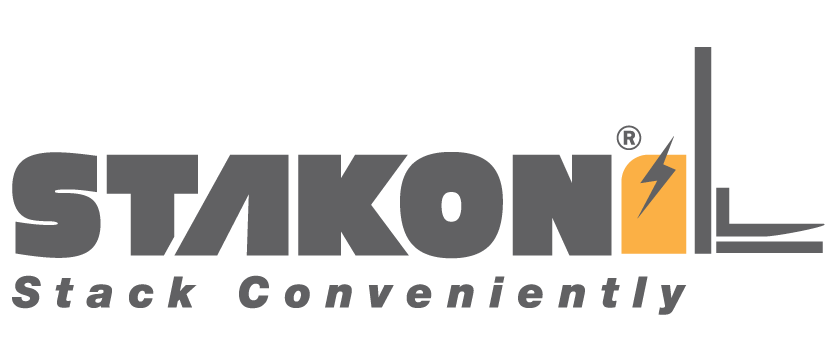Introduction
In today’s modern logistics and warehousing operations, the efficient movement and storage of goods is crucial. Pallet stackers, also known as stacker trucks, play a vital role in these operations, allowing for easy and efficient stacking and transportation of palletized goods. In this blog post, we will explore the concept of pallet stackers, highlighting their benefits and key features, and providing guidance on how to choose the right one for your business.
What are pallet stackers?
Pallet stackers are material handling equipment designed to lift and transport pallets of goods within a warehouse or distribution center. Unlike forklifts, which are commonly used for lifting and moving heavy loads, pallet stackers are more compact and maneuverable, making them ideal for narrow aisles and confined spaces. They come in different types, including manual, semi-electric, and electric stackers, each offering unique features and capabilities.
Benefits of pallet stackers
Pallet stackers offer several benefits that improve efficiency and safety in material handling operations. Firstly, they enhance productivity by allowing for quick and easy stacking and retrieval of goods. With the ability to lift and lower pallets efficiently, workers can complete tasks faster, reducing overall handling time.
Another significant benefit of pallet stackers is the improved safety they provide. By eliminating the need for manual lifting and carrying of heavy loads, stackers reduce the risk of back injuries and strains for workers. Additionally, stackers are equipped with safety features, such as anti-tip mechanisms and emergency stop buttons, ensuring the well-being of operators and preventing accidents that could damage products.
Pallet stackers are also a cost-effective solution, especially for small and medium-sized businesses. Compared to larger and more expensive forklifts, stackers are more affordable, making them accessible to businesses with limited budgets. Moreover, their compact size and maneuverability make them suitable for various industries, including retail, manufacturing, and distribution.
Key features of pallet stackers
Pallet stackers come with several key features that make them effective in material handling operations. These features include the lifting and lowering mechanisms, power source, load capacity, and control options. The lifting and lowering mechanisms allow operators to raise and lower forks to transport and stack pallets at different heights. Electric stackers typically have hydraulic systems that provide smooth lifting and lowering operations.
When it comes to power sources, pallet stackers offer different options. Manual stackers rely on the physical effort of the operator to lift and push the load. Semi-electric stackers combine manual and electric power, with the operator using a manual pump to lift the load, while an electric motor assists with propulsion. Electric stackers, on the other hand, are entirely powered by electricity, with an onboard battery providing the necessary energy.
Load capacity is another critical feature to consider when choosing a pallet stacker. Different stackers have varying load capacities, ranging from a few hundred kilograms to several tons. It is essential to select a stacker that can handle the weight of the loads in your operation without exceeding its capacity.
Control and steering options are also worth considering. Some stackers have simple controls, such as forward and reverse buttons, while others offer more advanced features like tilting and side-shifting for added flexibility. Steering options can include traditional handlebars or steering wheels, allowing operators to navigate through narrow aisles and tight corners with ease.
How to choose the right pallet stacker
Selecting the right pallet stacker for your business requires careful consideration of various factors. One of the primary considerations is the size and weight of your loads. Determine the maximum load size and weight that your stacker needs to handle so that you can choose a stacker with the appropriate load capacity.
Consider the aisle width in your facility as well. If you have narrow aisles, opt for a stacker with a narrower chassis for easy maneuverability. Ensure that the stacker can fit through your aisles without causing any damage to products or the equipment itself.
Floor surface and conditions should also be taken into account. Different stackers are designed for different floor surfaces, such as smooth concrete or outdoor terrain. Choose a stacker that is suitable for the conditions in your facility to avoid any performance issues or safety hazards.
Maintenance and safety are crucial aspects to consider when choosing a stacker. Evaluate the maintenance requirements of each stacker and determine if you have the resources and expertise to perform the necessary maintenance tasks. Additionally, ensure that the stacker is equipped with safety features, such as anti-tip mechanisms and emergency stop buttons, and that proper training is provided to operators to maintain a safe working environment.
Conclusion
Pallet stackers are versatile and efficient tools that enhance productivity and safety in material handling operations. By understanding the different types and key features of stackers, and by considering various factors when choosing one, businesses can optimize their material handling processes. Whether you are a small retailer or a large manufacturer, pallet stackers provide a cost-effective and reliable solution for stacking and transporting goods. Take the time to evaluate your needs and select the right stacker for your business, and experience the benefits of improved efficiency and safety in your material handling operations.
We hope this blog post has provided you with valuable insights into pallet stackers. If you have any questions or would like to share your experiences with pallet stackers, please feel free to leave a comment below.
